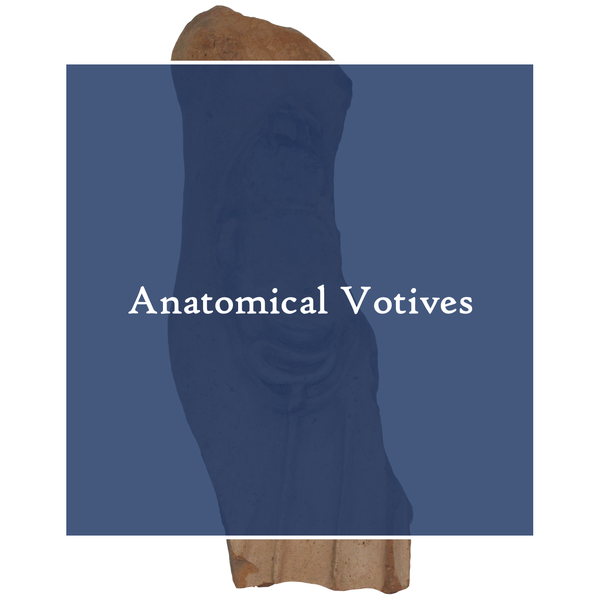Anatomical Votives
The Anatomical Votives of the Stieda Collection
Ludwig Stieda was born the son of a merchant in Riga. He studied medicine and already won various awards during his studies, among others for anatomical studies. After receiving his doctorate in 1861, he deepened his knowledge in Giessen, Vienna and Erlangen and then taught anatomy in Dorpat (now Tartu). In 1885 he became a full professor and director of the Anatomical Institute in Königsberg. In 1912 he returned to Giessen, where he finally died in 1918 on his 81st birthday. His friendship with the classical philologist Alfred Körte was decisive in his travelling to Italy in 1899 to study Etruscan votives. He acquired numerous anatomical votives in Isola Farnese, which he donated to the Collection of Classical Antiquities in 1913. Originally, the collection comprised about 60 objects, some of which were lost after World War II. About 40 pieces have been preserved, of which a representative selection is shown in the permanent exhibition. |
|
|
The site The Etruscan city of Veji is located on a plateau about 15 km northwest of Rome near the modern village of Isola Farnese. The earliest finds point to a first Late Bronze Age settlement at Isola Farnese. The town of Veji itself shows the first settlement finds in the so-called Villanova period (9th/8th century BC). From the 6th century BC onwards, the town became very wealthy, mainly through salt production. It had several public buildings, temples and sanctuary precincts. The ongoing conflicts with Rome, and finally the defeat by the Romans in 396 BC, sealed the end of the first Italic advanced civilisation. The archaeological finds, however, prove that the area was inhabited until Hellenistic times. The body part votives come from a find complex in the area of the sanctuary (from the Pendici depot in the Piazza d'Armi) and date to the end of the 4th to the middle of the 3rd century BC, individual pieces belong to the 2nd century BC.
|
The votives In addition to figural representations interpreted as young infants, the collection includes a variety of body parts such as heads, extremities, eyes, ears or male sexual organs and internal organs. Some of these viscera can be identified with some probability, such as a uterus, others present greater difficulties or have been interpreted quite differently. For example, other more stylised objects have been interpreted both as hearts and as sacrificial biscuits. A special feature are the visceral panels, which show the internal organs in combination, and partially clothed torsos, which allow a window-like view into the interior of the body through an opening. Researchers have variously discussed the function of such offerings, which are also found in comparable form in other regions, from Gaul to Greece and Cyprus. The interpretations range from a request for the well-being and recovery of the consecrator and his family to thanks to the deity for a favour shown. Contrary to earlier assumptions, however, the objects do not provide any indications of pathological changes in the body parts. |

